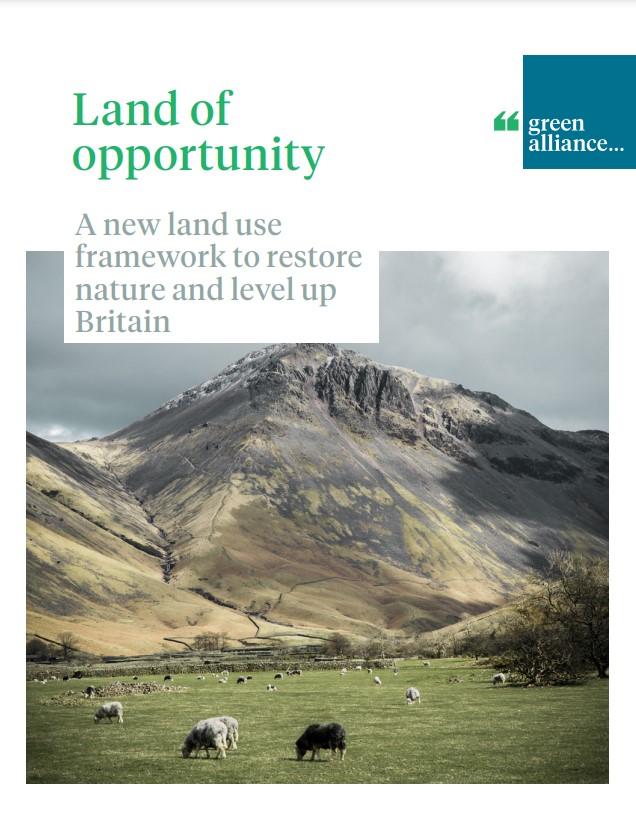Land of opportunity - A new land use framework to restore nature and level up Britain

Report published by The Green Alliance by James Elliott, Lydia Collas and Dustin Benton in response to the Government's commitment to developing a Land Use Framework.
Summary:
What we ask of the countryside is changing. Land, of course, is needed to produce food: we dedicate 70 per cent of the UK’s land to farming. But, in the face of climate change and the loss of nature, land must also soak up carbon dioxide from the atmosphere, provide much more habitat for wildlife and help to defend against increasing natural risks like flooding. These needs are codified in new laws which require net negative greenhouse gas emissions from land by 2050 and a reversal of the 70 year decline in nature by 2030. Expecting every parcel of land to produce food, nature, carbon removal, recreation and flood abatement in equal measure is a recipe for failure. There are hard trade-offs: managing land to maximise food production reduces its nature and carbon sequestration potential. Using peatlands to grow food in the way we do today imposes too high a carbon cost. Instead, policy should make a virtue of the fact that natural capital varies enormously across space. Twenty per cent of farmed land in England produces just three per cent of the calories we grow and, as our analysis shows, using the least productive ten per cent of land for natural habitat and carbon removal would raise bird populations by 48 per cent by 2050 and save half the carbon needed by 2035 from the whole land system.
The government’s forthcoming Land Use Framework, announced in June 2022, must guide nature restoration and carbon removal towards areas poorly suited to producing food. It should also support farmers to keep food yields high on productive land while using much less fertiliser and pesticide: reductions of a quarter are possible without loss of production. Rewarding habitat restoration on the least productive land would help level rural areas up: many farmers on poor quality land struggle to make a profit from producing food, but they could have good incomes from the habitat and carbon removal their land is suited to provide. Using the least productive land for nature, and the most productive land for food will enable the remainder, the majority of farmland, to produce a mix of food, nature and carbon removal. Taken together, this ‘three compartment’ model of land use would meet all the government’s goals for the land. It should form the basis of a spatially explicit Land Use Framework. This framework would need to be more than advice, but less than command. Rather than dictating how land is used, it should show how the government proposes to fund the nature and climate outcomes that farmers and landowners can provide. It would show where the government believes land is best suited to produce food or nature, or both, and it would commit to funding (from public and private sources) to achieve the mix needed to meet the country’s nature, climate and food goals. It would enable farmers to make sense of the Environmental Land Management scheme (ELM) and markets for ecosystem services, and to plan how to use their land in light of these new opportunities.

